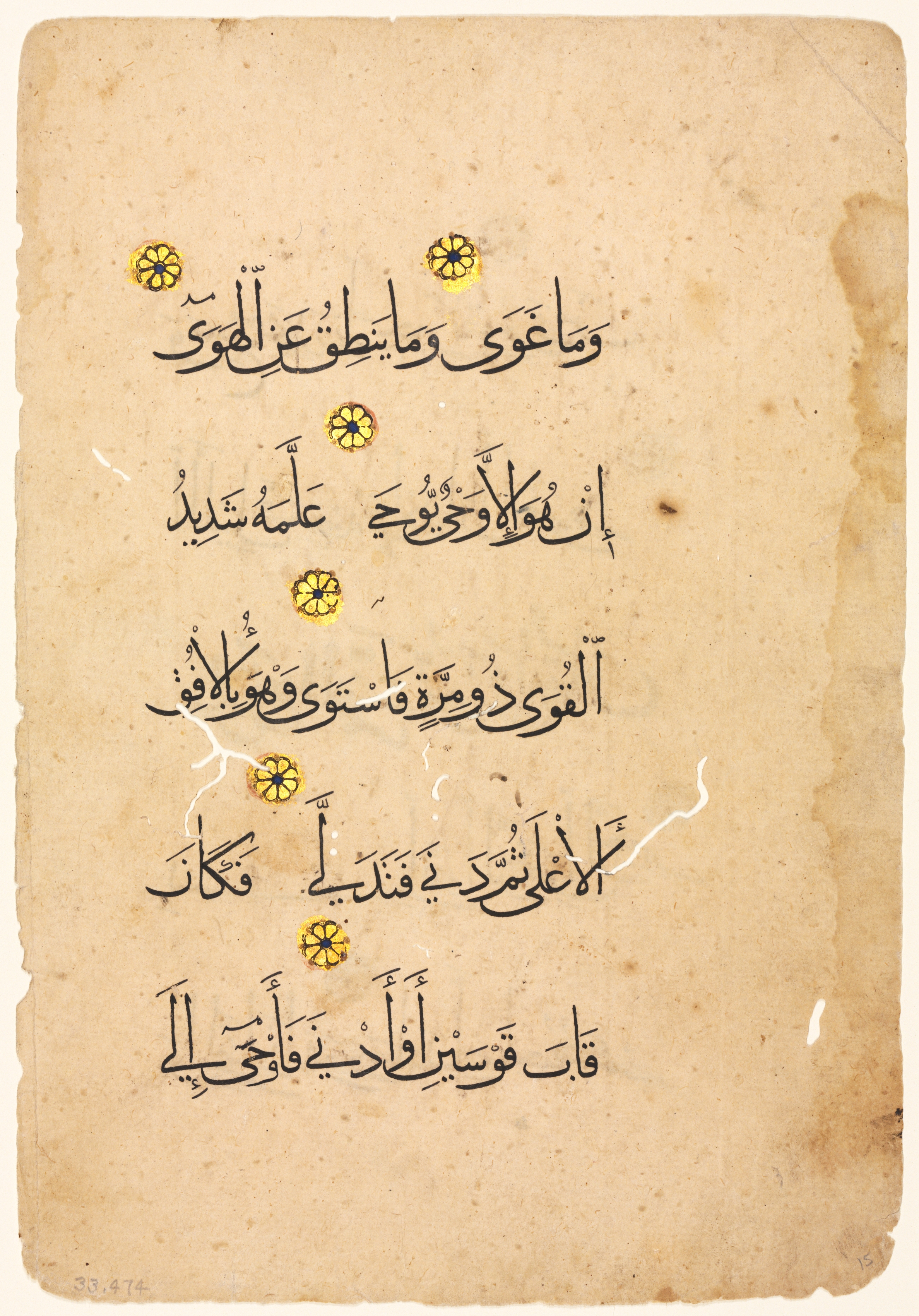The Cleveland Museum of Art
Collection Online as of April 19, 2024

Qur'an Manuscript Folio (verso)
1300s-1400s
(1250–1517)
Sheet: 23.5 x 16.4 cm (9 1/4 x 6 7/16 in.); Text area: 15.1 x 10.2 cm (5 15/16 x 4 in.)
Edward L. Whittemore Fund 1933.474.b
Location: not on view
Description
It is through the Arabic language that the Qur’an was revealed to the Prophet Muhammad in the 600s. As a result, calligraphy is celebrated as the highest form in Islamic art. The verses (ayat) written here come from the 53rd chapter (surah) of the Qur’an, also known as the Surah An-Najm, the Chapter of the Star. The significance of the Qur’an provides an explanation for the importance of calligraphy, but its use was not restricted to religious texts. Many objects in the museum's Islamic collection bear calligraphic inscriptions and come from secular contexts, displaying the versatility and creativity of this art form.- ?-1933(Ananda K. Coomaraswamy [1877-1947] sold to the Cleveland Museum of Art)1933-The Cleveland Museum of Art, Cleveland, OH
- {{cite web|title=Qur'an Manuscript Folio (verso)|url=false|author=|year=1300s-1400s|access-date=19 April 2024|publisher=Cleveland Museum of Art}}
Source URL:
https://www.clevelandart.org/art/1933.474.b